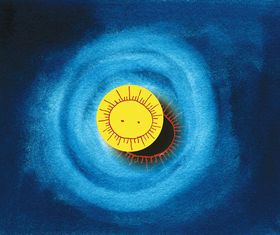From the Élysée Palace, the citadel of power in the heart of Paris, King Jupiter, aka French President Emmanuel Macron, proclaims loftily: It is time to give citizens “a sense of hope and an appetite for the future”. It is that time of the year when words of optimism irritatingly ring louder than church bells. Politicians and celebrities who corrode hope with their policies, lifestyles and scandals are the loudest. It is like they don’t even hear their own words. Macron makes versions of this speech often, the first from the grand Versailles Palace six years ago.
Since then, France has become more divided and distrustful, like many other countries. Macron had expressed hope for Libya, Lebanon and Gaza. Life became worse there. The international mood darkens with old and new threats. Youngsters, some with families, opt to live “off-grid”, logging out of normal life as we once knew it.
Yet, beneath the blur and the cacophony, there are green shoots of hope, with some governments, activists, scientists and citizens working like ants to save the world. This phenomenon—unlike big innovation—escapes attention because the media is mostly a “dooms-day machine” grabbing eyeballs by showcasing the worst of humanity, without adequately emphasising restoration and progress. But these human ants typify the natural order of things. This is how evolution works—incremental advances through iterations—repeating the creative process to improve the species, enabling it to adapt to the changing environment. Governments, researchers, and businesses incrementally improve policies, activities and products to better serve people’s needs.
Carbon emissions are still increasing and we are not on track to achieve climate goals. Yet, there are rays of hope. The world’s two biggest polluters, US and China, aim to substantially reduce their carbon emissions. Solar technology became lucrative as iterations dramatically lowered price and improved energy yield. The US’s game-changing Inflation Reduction Act (IRA), created to fund its green transition, is a massive manufacturing drive that will show results within a decade. Electric cars are now mainstream, redefining cars’ identity as vehicles to computers-on-wheels. Recent health care discoveries give not just hope, but actual extensions of life, especially for cancer and AIDS patients. While inequality has increased, more people have risen out of poverty, more girls educated, more children fed in schools, more people have access to better sanitation and the world closer to a fairer international tax system.
Technology and innovation have been the key drivers of progress. Humanoid robots, cloud and quantum computing, digital, 5G and blockchain technologies, artificial organs and intelligence, smart electricity grids, drones and human genome mapping are a few examples that are transforming 21st century life. From the printing press to 3D printing, the journey of homo sapiens is nothing short of spectacular.
But creativity and destruction are two sides of the coin and Lord Shiva’s cosmic rhythm rests on balance. As the Buddha said, everything is good—in moderation. AI, warmongering, cronyism, grotesque inequalities have become monsters because societies and nations have gone extreme, losing their balance, their sense of prudence and priorities. Justice, vigilance and smart regulations are stepping stones to a fairer, happier, orderly world.
But smart action struggles to keep pace with accelerating change. While celebrities have more silicon than cells in them, politicians seem to need intellectual Botox. To provide hope and fresh momentum, Jupiter hinted an imminent cabinet reshuffle. Such hackneyed political games of unmusical chairs not only lack imagination, but threaten to trample the tender shoots of hope.
Pratap is an author and journalist.


